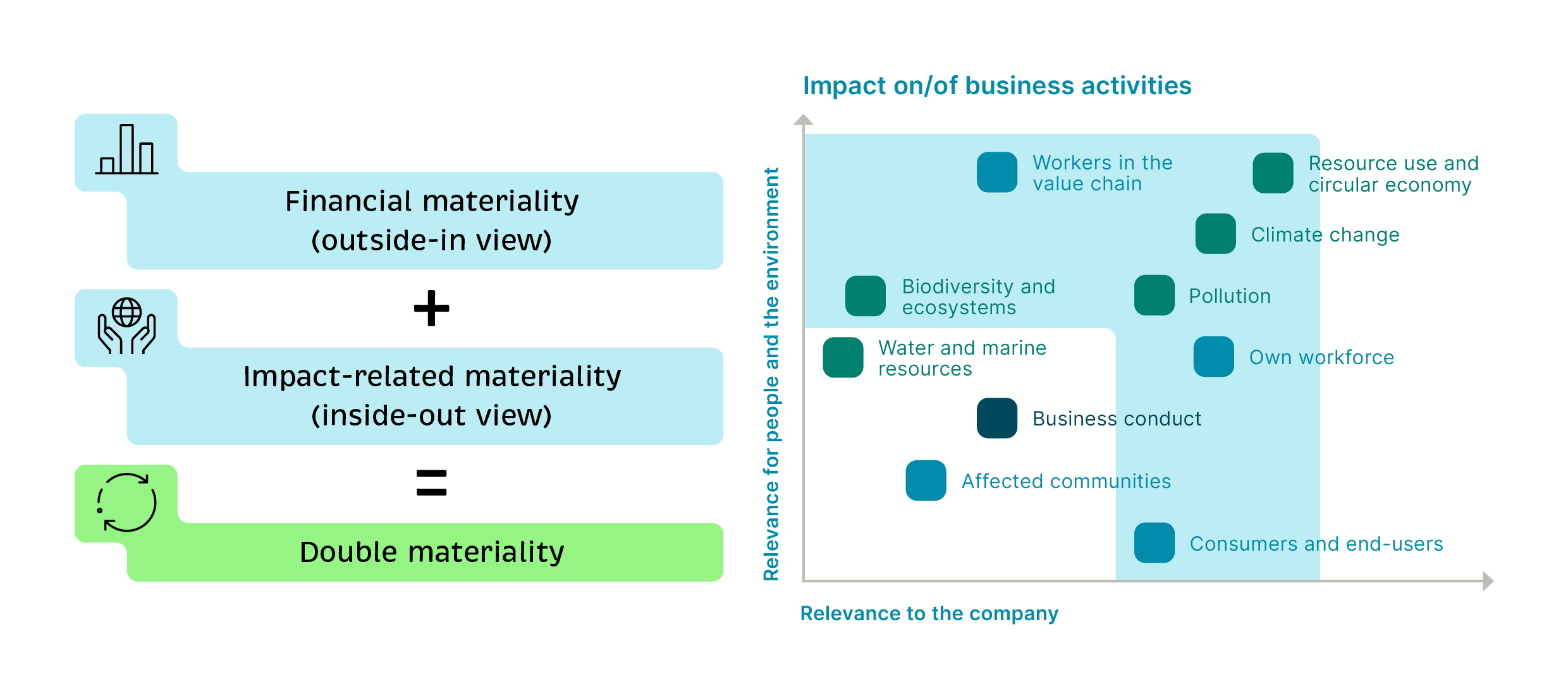The theoretical bases for double materiality analysis have been drafted in extensive detail – they were defined in the European Sustainability Reporting Standards (ESRS) in the summer of 2023 (see ESRS 1 and ESRS 2). Afterward, a guideline over 40 pages long on the implementation of the double materiality analysis was published in late 2023 by the European Financial Reporting Advisory Group (EFRAG), followed by further explanatory information from academia and NGOs, such as the CSRD Quick Guide published by TU Wien in cooperation with WWF.
A closer look at the publicly accessible information surrounding the topic of double materiality reveals differences in how the various stakeholders are interpreting the standards. For example, different users of the standards take different views on the time when, and the manner in which, internal and external stakeholders are to be involved.
There is thus no standardized or one-size-fits-all solution for a double materiality analysis. This has created a great deal of uncertainty, especially among companies that are carrying out a materiality analysis for the first time. Still, the lack of uniform approaches is not necessarily a negative. Instead, it means companies are called on to interpret the standards for performing this analysis individually for themselves. This process may involve more time, effort, and expense, but it also provides an opportunity for organizations to craft an analysis that best meets their needs.


